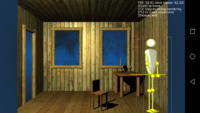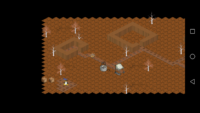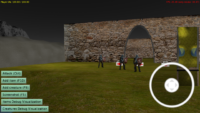 |
 |
 |
We’re ready for the next Castle Game Engine 6.4 release. This weekend (Friday / Saturday), I’ll announce and upload everything 🙂
In the meantime, here’s a list of engine improvements we did in January:
-
Drawing ellipses (and circles), rectangles, lines on TCastleImage thanks to Eugene Loza.
-
DXF exporter application, thanks to @rweinzierl on our Discord.
-
Many improvements to the engine examples:
- rift (fixed_camera_game) example was completely reimplemented. It now uses TUIState, has muuuch simpler code, and is portable to mobile (Android, iOS).
- Terrain example reimplemented, has now much more functions (like adjusting shader parameters) and better defaults (some taken from wyrd-forest), and is portable to mobile too (Android, iOS).
- Various fps_game improvements for Android.
- sandbox (now just “isometric_game”) code improved (although it still uses a very simple approach to rendering) and it can compile to mobile (although input still relies on a keyboard).
-
Sound buffer improvements and fixes: TSoundBuffer is a class now (although it should be invisible to you, as it’s automatically managed by the sound engine). And it correctly “survives” if the application was paused / resumed on Android. So you can safely do Buffer := SoundEngine.LoadBuffer(‘sound.wav’) in Application.OnInitialize and then play this buffer at any time later.
-
Easier way to adjust
ApplicationName: just set ApplicationProperties.ApplicationName. -
New property Attributes.SolidColor to make
Attributes.Mode = rmSolidColorreliable with the shader pipeline. -
The
assets:/protocol is deprecated, better use nowcastle-android-assets:/. Read more about the protocols supported here, and reasons for name change are listed here. This should be internal (invisible during normal engine usage), as cross-platform applications should never explicitly use this protocol.